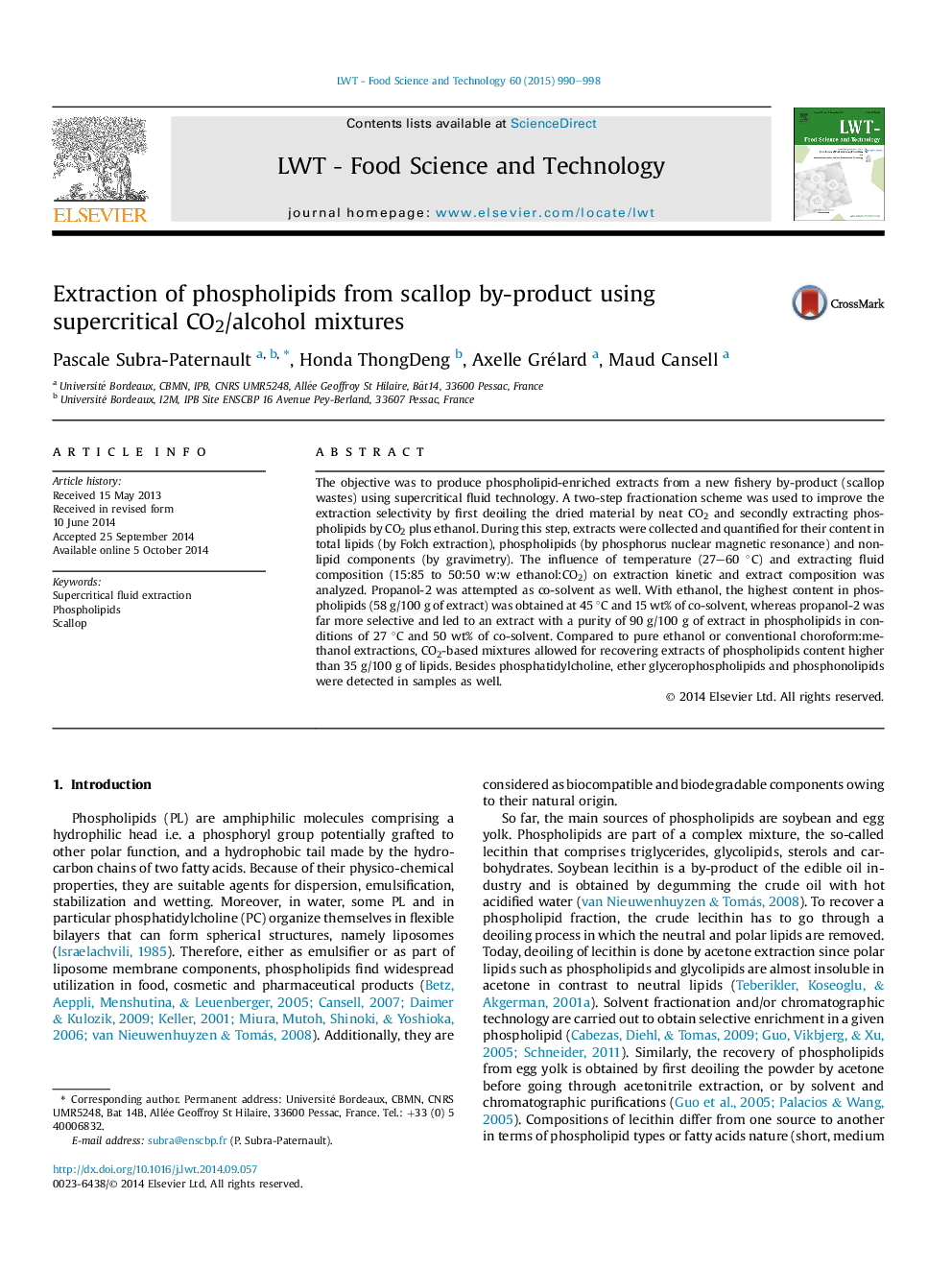| Article ID | Journal | Published Year | Pages | File Type |
|---|---|---|---|---|
| 6402502 | LWT - Food Science and Technology | 2015 | 9 Pages |
â¢Phospholipid extracts of high purity (50-90 g/100 g of extract, 79-90 g/100 g of total lipid).â¢Were recovered from scallop wastes by supercritical CO2 + alcohol processing.â¢Phosphatidylcholine was the main phospholipid of scallops wastes and extracts.â¢Although ether-phosphatidylcholine and phosphonolipids were identified as well.
The objective was to produce phospholipid-enriched extracts from a new fishery by-product (scallop wastes) using supercritical fluid technology. A two-step fractionation scheme was used to improve the extraction selectivity by first deoiling the dried material by neat CO2 and secondly extracting phospholipids by CO2 plus ethanol. During this step, extracts were collected and quantified for their content in total lipids (by Folch extraction), phospholipids (by phosphorus nuclear magnetic resonance) and non-lipid components (by gravimetry). The influence of temperature (27-60 °C) and extracting fluid composition (15:85 to 50:50 w:w ethanol:CO2) on extraction kinetic and extract composition was analyzed. Propanol-2 was attempted as co-solvent as well. With ethanol, the highest content in phospholipids (58 g/100 g of extract) was obtained at 45 °C and 15 wt% of co-solvent, whereas propanol-2 was far more selective and led to an extract with a purity of 90 g/100 g of extract in phospholipids in conditions of 27 °C and 50 wt% of co-solvent. Compared to pure ethanol or conventional choroform:methanol extractions, CO2-based mixtures allowed for recovering extracts of phospholipids content higher than 35 g/100 g of lipids. Besides phosphatidylcholine, ether glycerophospholipids and phosphonolipids were detected in samples as well.
